Beyond Amsterdam: Windmills, Clogs, and Dutch Cheese
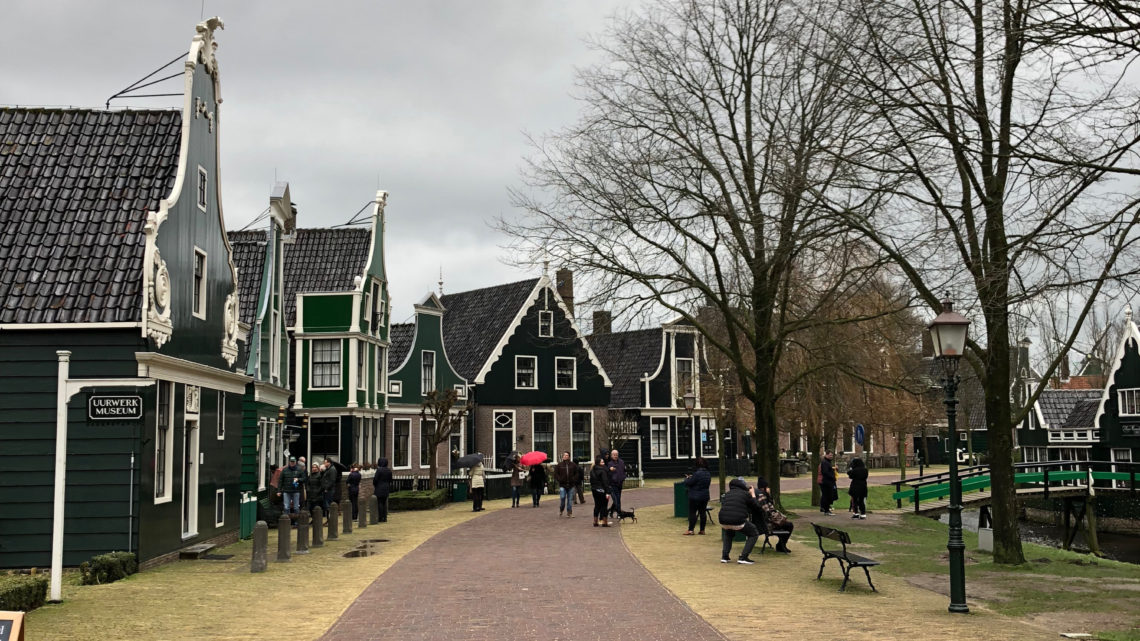
When I first pictured visiting the Netherlands, I imagined windmills, clogs, and delicate Dutch cheese. Just 45 minutes outside of Amsterdam is Zaanse Schans, where one can find it all! I knew that my trip would not be complete without getting a taste of classic Dutch culture beyond the city.
Portuguese Synagogue
Before hopping on the train into the suburbs, there was one more sight I wanted to visit in the city center. Amsterdam has a famous Jewish quarter and one of its highlights is the Portuguese Synagogue. As an architect, I often visit more famous churches than synagogues simply for their significance in the history of architecture. However, when I get the chance to visit a synagogue, it always gives me a spiritual connection to my religion, especially when it is in an unfamiliar city.
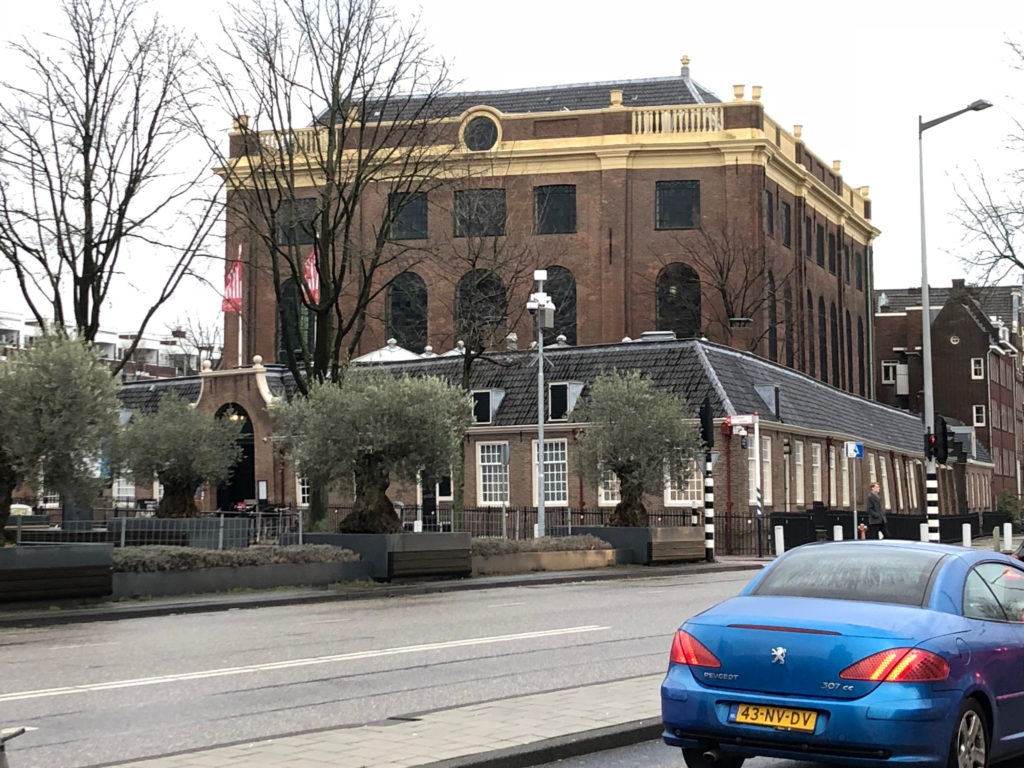
After a quick metro ride from Amsterdam Centraal, I emerged in front of the synagogue. The main building is surrounded by a courtyard but stands tall over the nearby buildings. I bought my entrance ticket, put on my yarmulke, and headed inside!
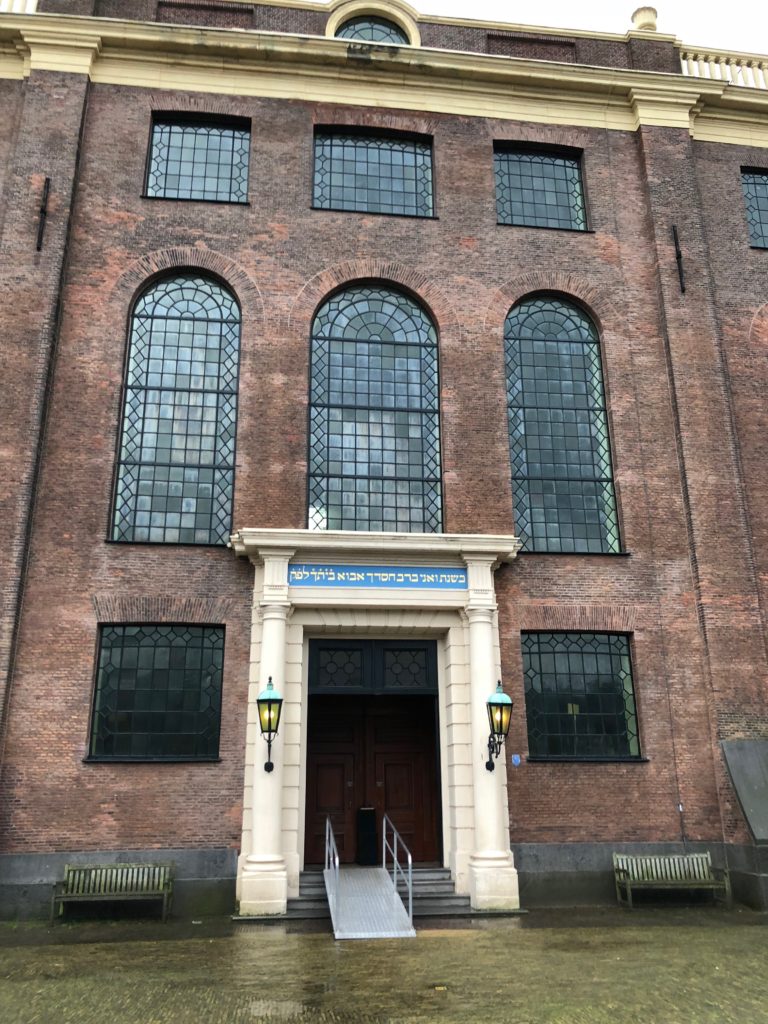
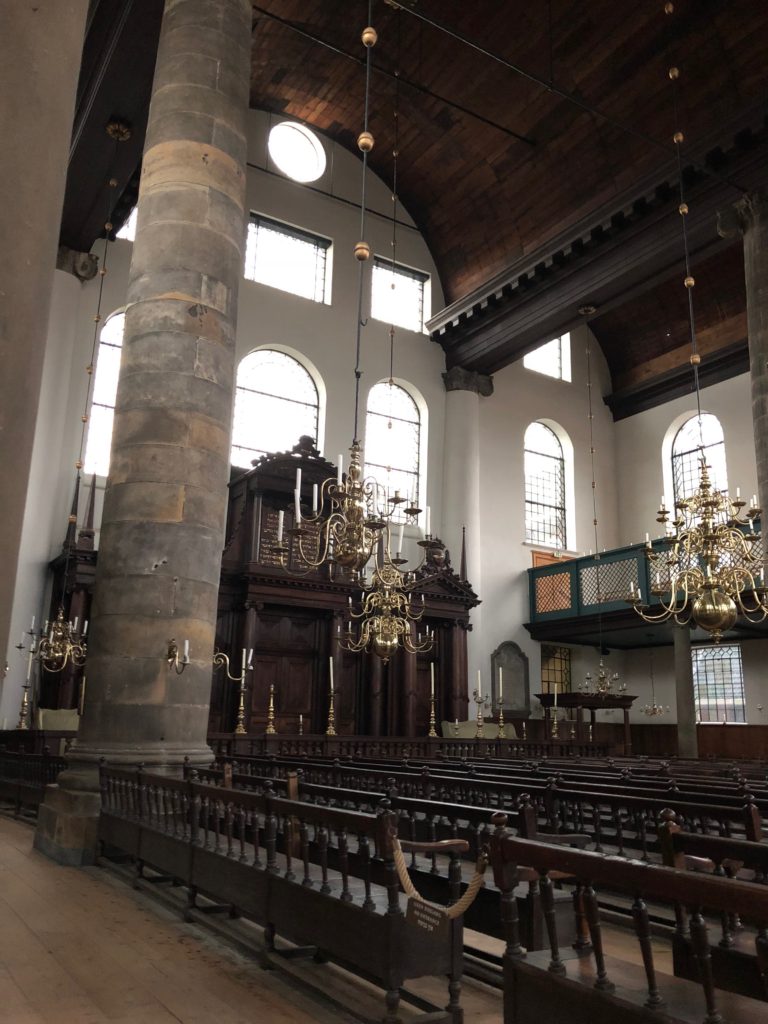
In contrast to many of Amsterdam’s intricate churches, this synagogue is extremely simple in its design language, taking on a classical form. The façade is made primarily of brick, with stone only being used for the building’s frieze and main entrance. The clear windows are either rectangular or arched in shape and appear black from the outside.
A high, vaulted wooden ceiling spans the entire building. The interior is modest in nature, without the intricate ornamentation that many of Amsterdam’s churches have. However, the furnishings help make this interior feel like a holy place. A dark wooden ark sits at the front of the sanctuary and a large ornate altar marks the center of the room. The golden chandeliers are the only bright colored objects in this otherwise dim interior.
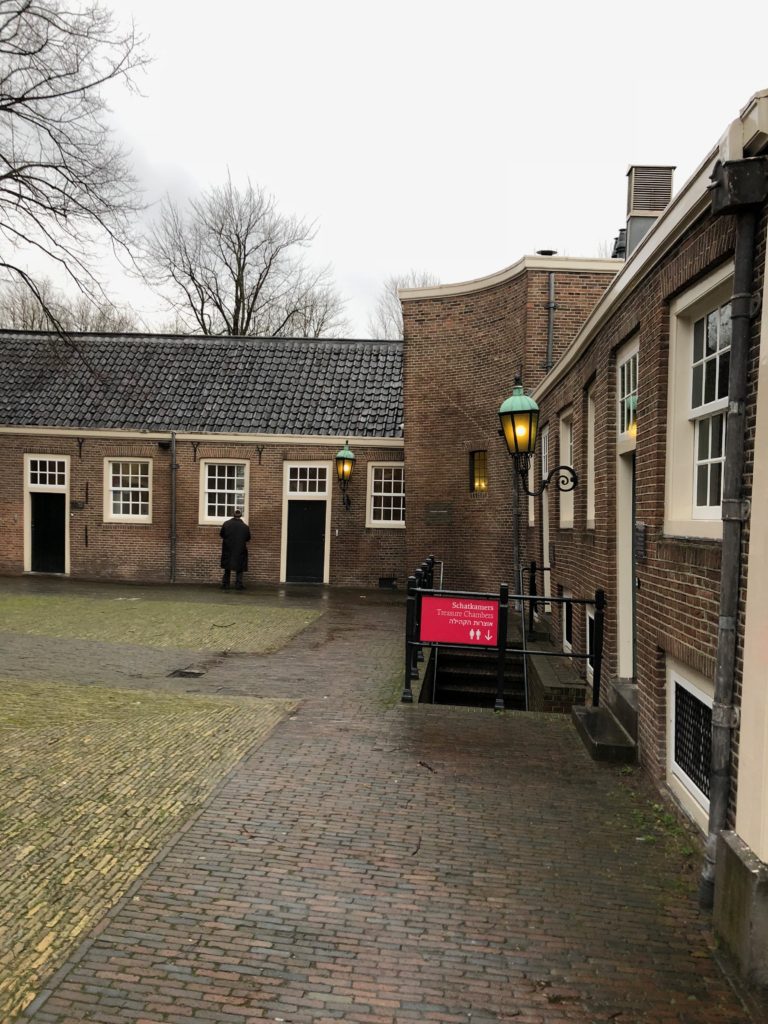
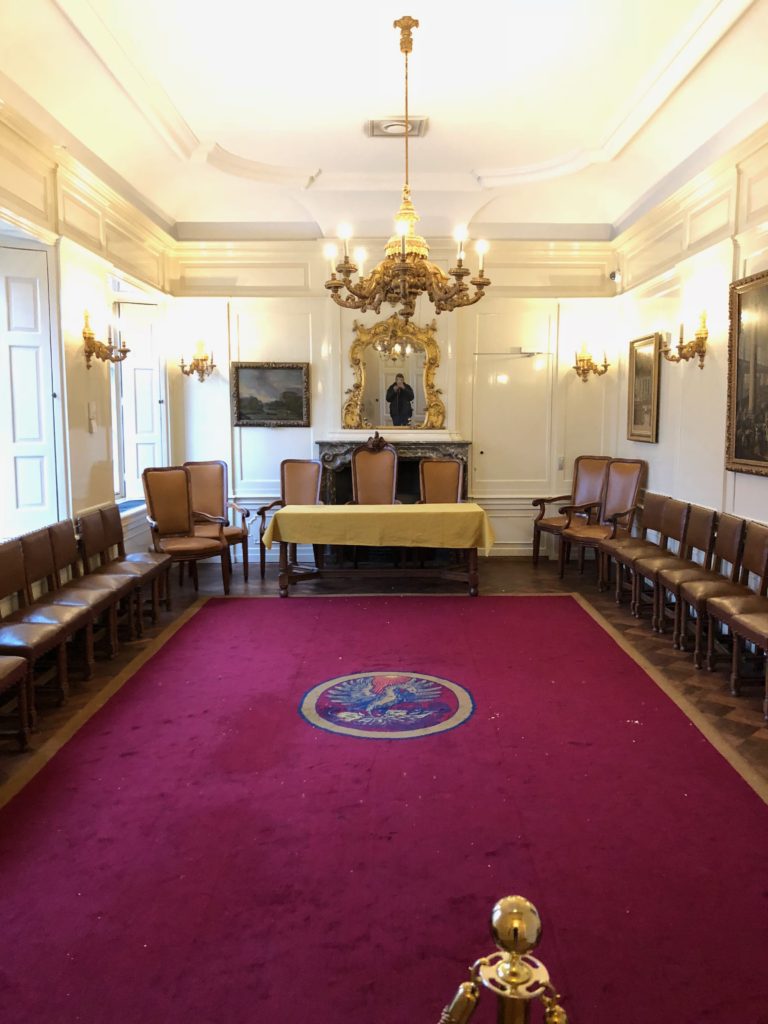
The surrounding courtyard consists of low brick buildings, which house spaces including the rabbi’s house, offices, archives, and a winter synagogue. The inside of these spaces feels more intimate compared to the large synagogue at the center of the courtyard.
While touring the building, I learned about the history of the Jews who emigrated from the Iberian Peninsula during the 17th century looking for a better life in Amsterdam. Although out of the way from most attractions, this synagogue is a hidden gem in the city!
Train to Zaandijk
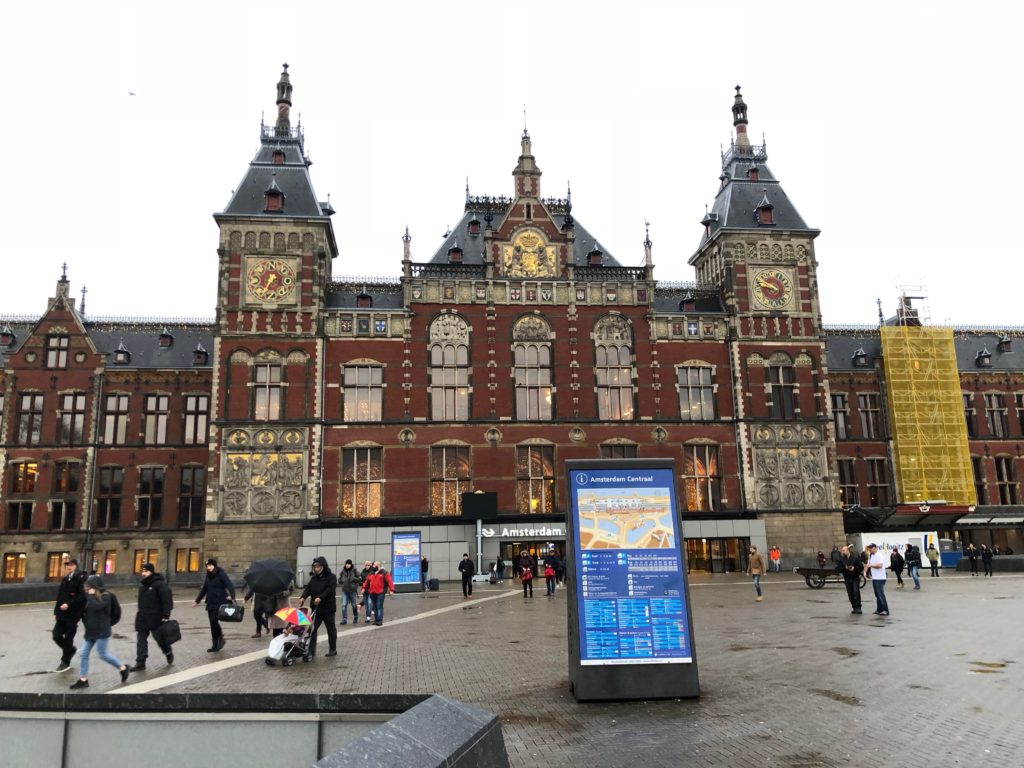
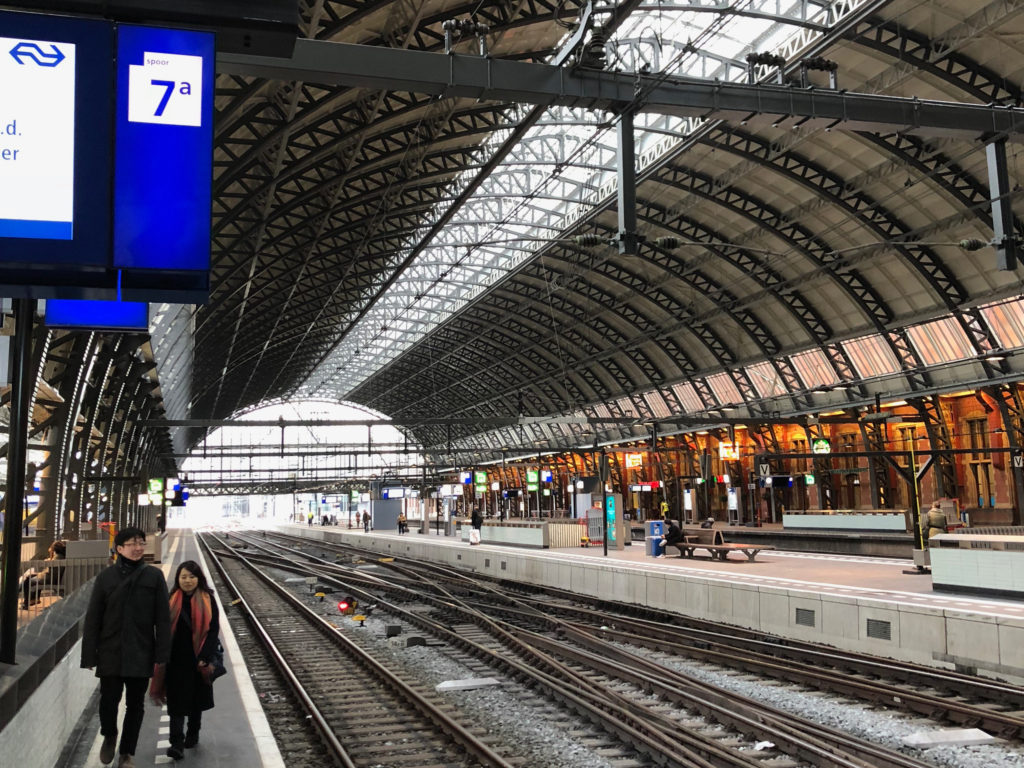
By the late morning, I headed back to Amsterdam Centraal to catch my train to Zaanse Schans. I had previously marveled at the intricate exterior, designed by Pierre Cuypers, but had yet to see the inside. Although the outside takes its inspiration from Gothic and Renaissance architecture, Cuypers left the design of the inside to railway engineers. Behind the brick and stone façade, a steel-framed vaulted ceiling spans the train platforms. On this platform, I found my train bound for Uitgeest. All over Europe, trains are fast and efficient. B
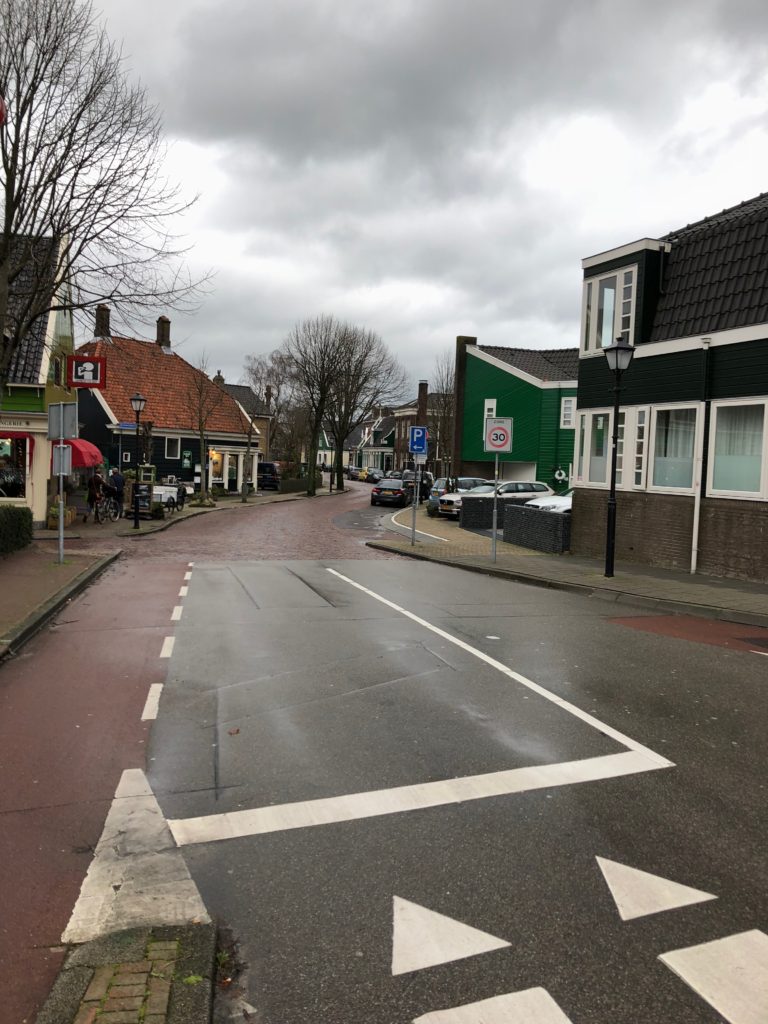
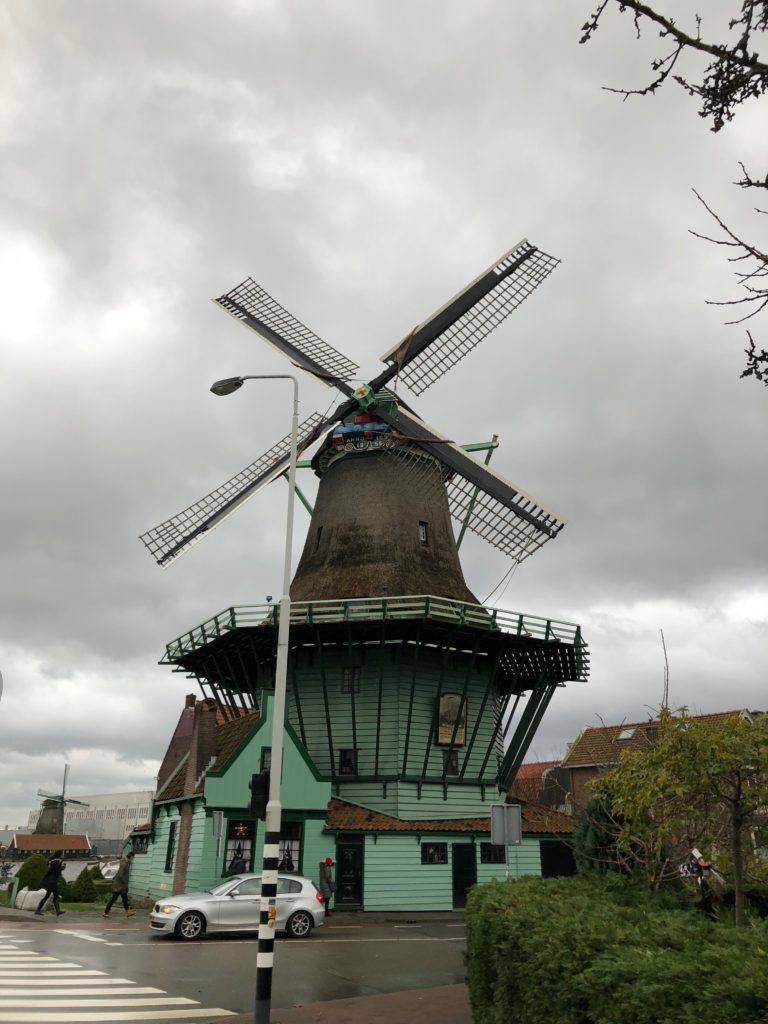
I began my walk from the station into the suburbs of Amsterdam. I passed many cookie-cutter homes in a quiet neighborhood. After five minutes, I could see the first windmill come into view. This was only the beginning of what I was about to see. As I crossed the bridge over the water, I saw several more windmills and cute Dutch farmhouses come into view. I had arrived at Zaanse Schans!
Zaanse Schans
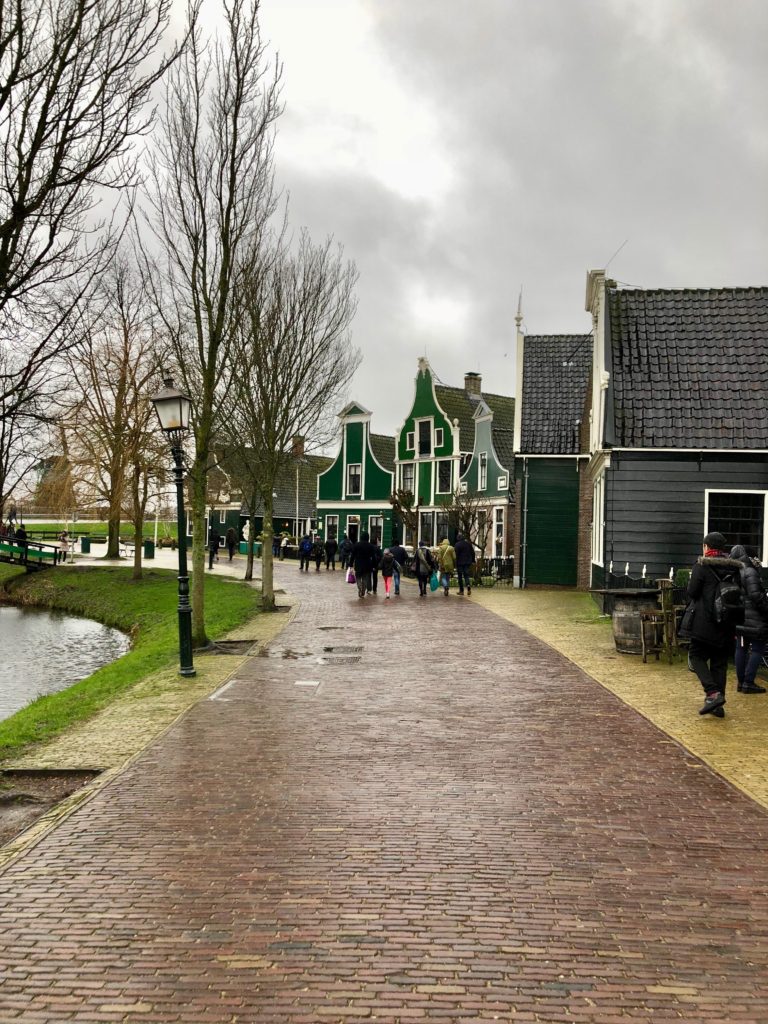

I entered what felt like the fairytale Dutch village that I pictured when visiting the Netherlands. The buildings here are wooden and predominately green in color. Many of them take influence from their larger counterparts in Amsterdam’s city center. Much like the canal homes, these farmhouses are divided into three bays with large windows and prominent gables. However, they are much smaller in scale to fit their rural environment.
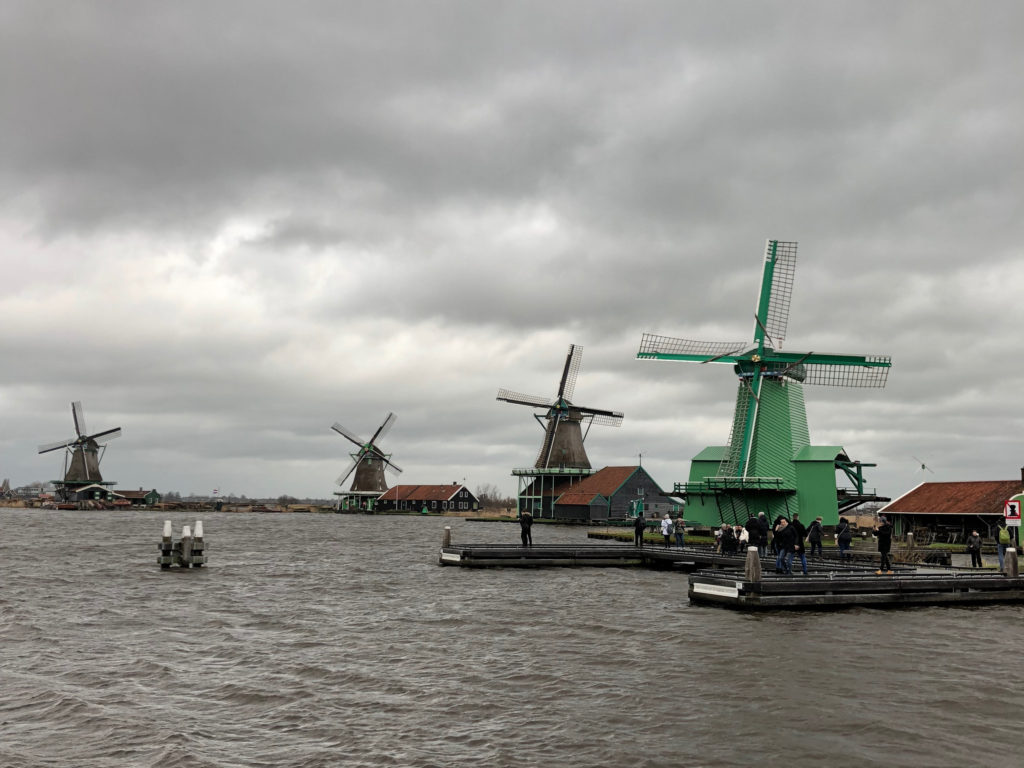
Down the river, I could see several windmills, all painted in different colors. Some of them were still working, while others were simply on display. Although the Netherlands has many of these mills scattered throughout the countryside, many of them are modern plastic wind turbines. The original ones are wooden and are much more beautiful!
Clog-Making Workshop
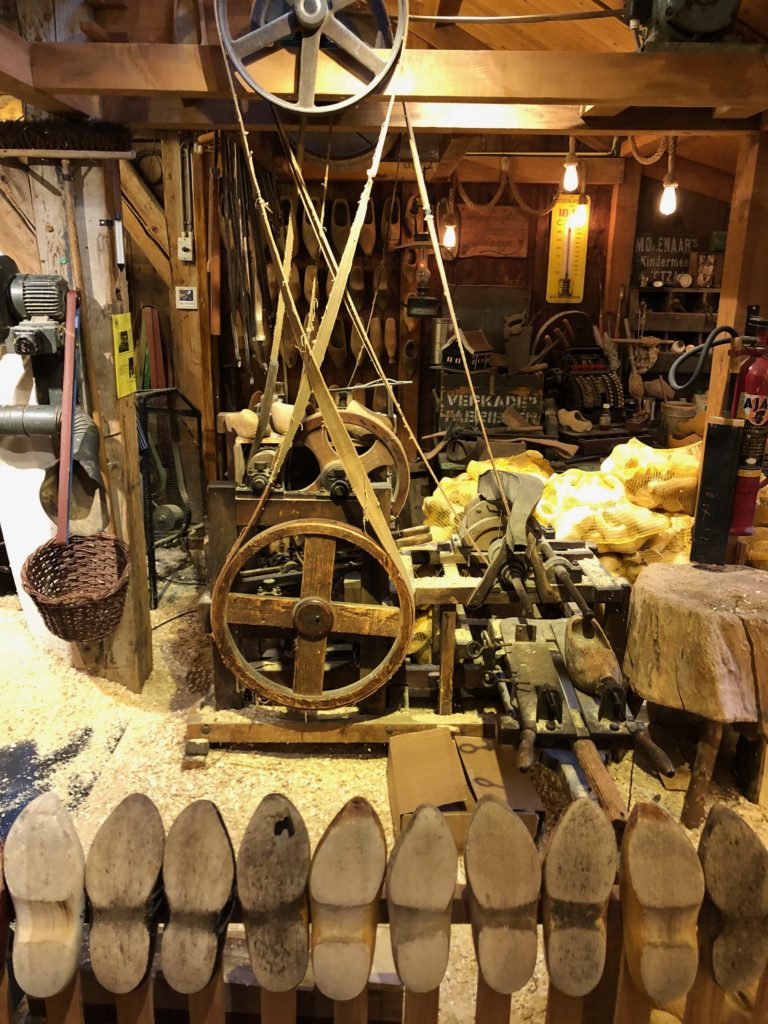
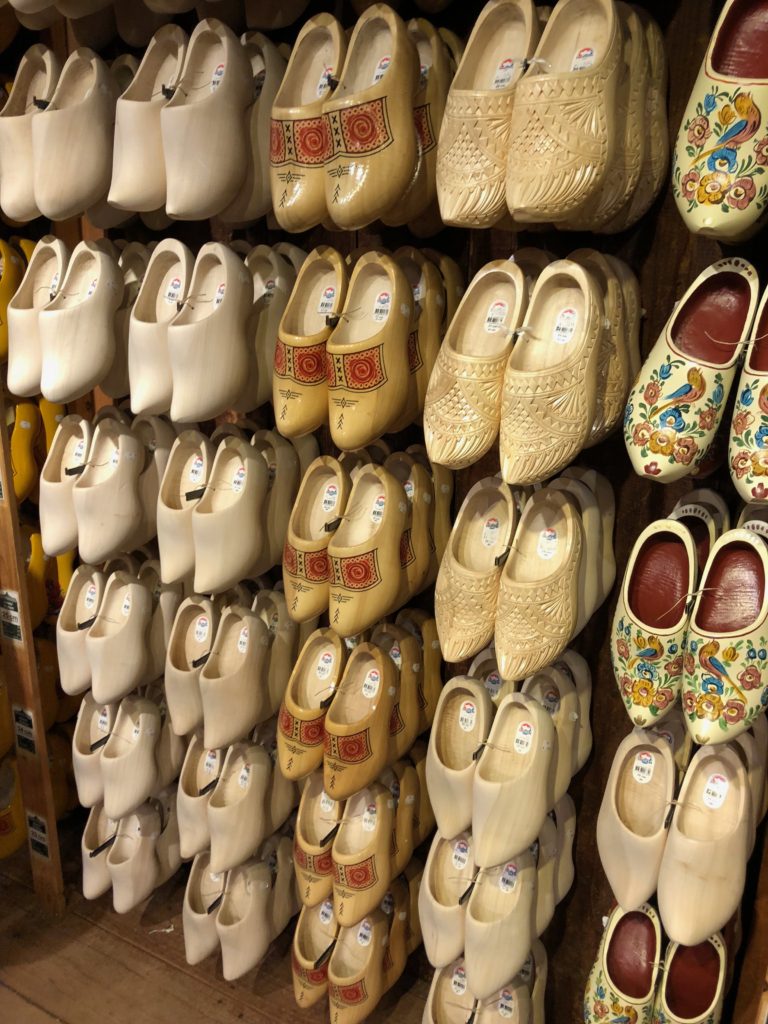
My first stop in the village was a Dutch clog-making workshop. At this family-run business, tourists learn the process of how clogs are made. First, wood is rough-cut, before being put in a machine that gives them their final shape. After that, another machine scoops out the inside and forms them into wearable shoes. The clogs are left to dry for a few weeks before being sanded and decorated.
The workshop includes a live demonstration of the machine-work that goes into shaping the clogs. After watching the artisan operate the equipment, visitors proceed into a large gift shop where the beautiful footwear is on display. Although I did not buy any, the clogs certainly make for a traditional Dutch souvenir.
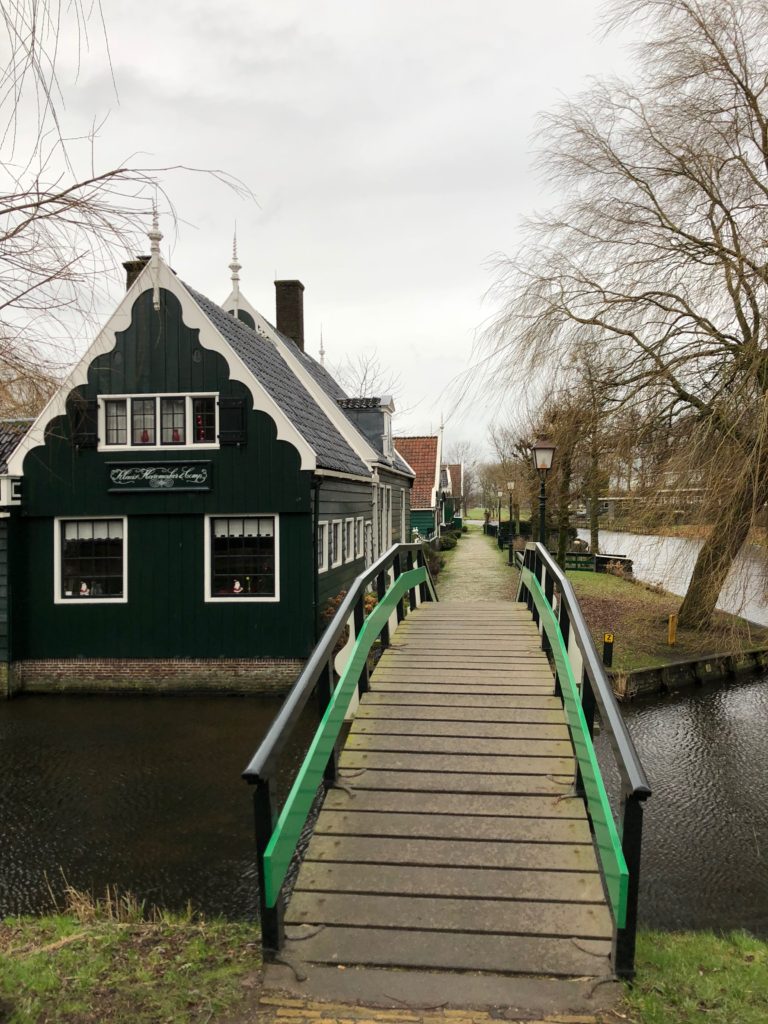
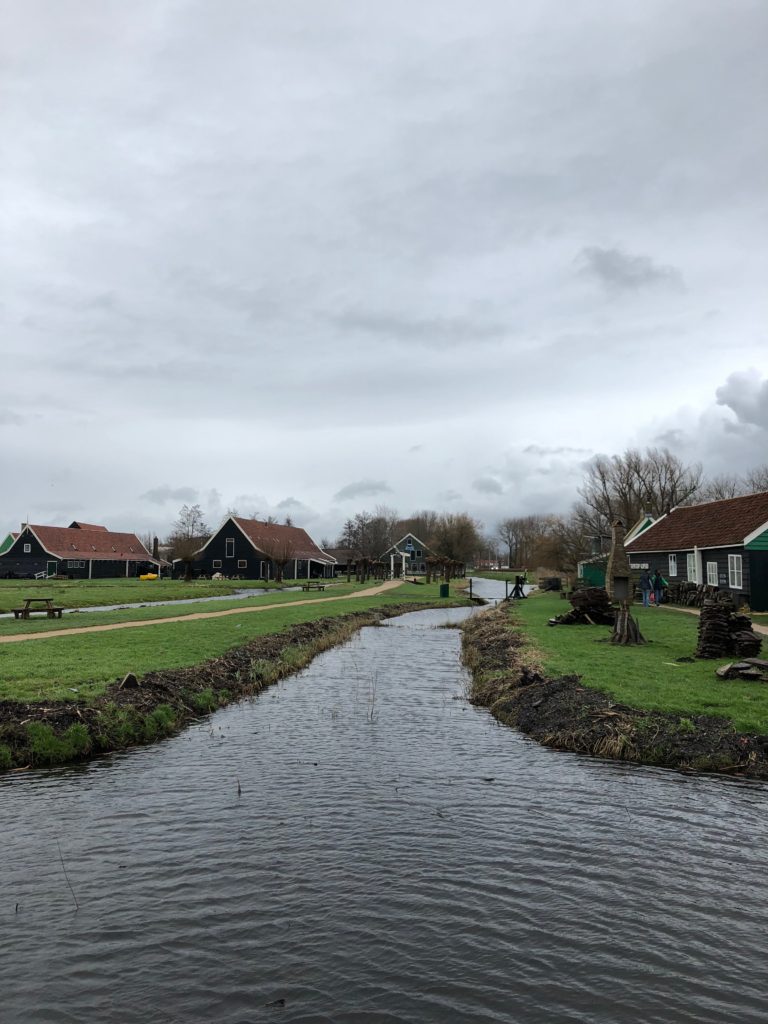
Zaanse Schans contains many waterways, a reminder that the village is located in the lowlands of Europe. I walked across several wooden bridges as I continued to pass by more farmhouses, many of which function as shops and other attractions displaying Dutch culture. Beyond the entrance, most farmhouses steer away from the architectural style of Amsterdam’s canal homes, with more traditional gables and smaller windows.
Two-Headed Phoenix
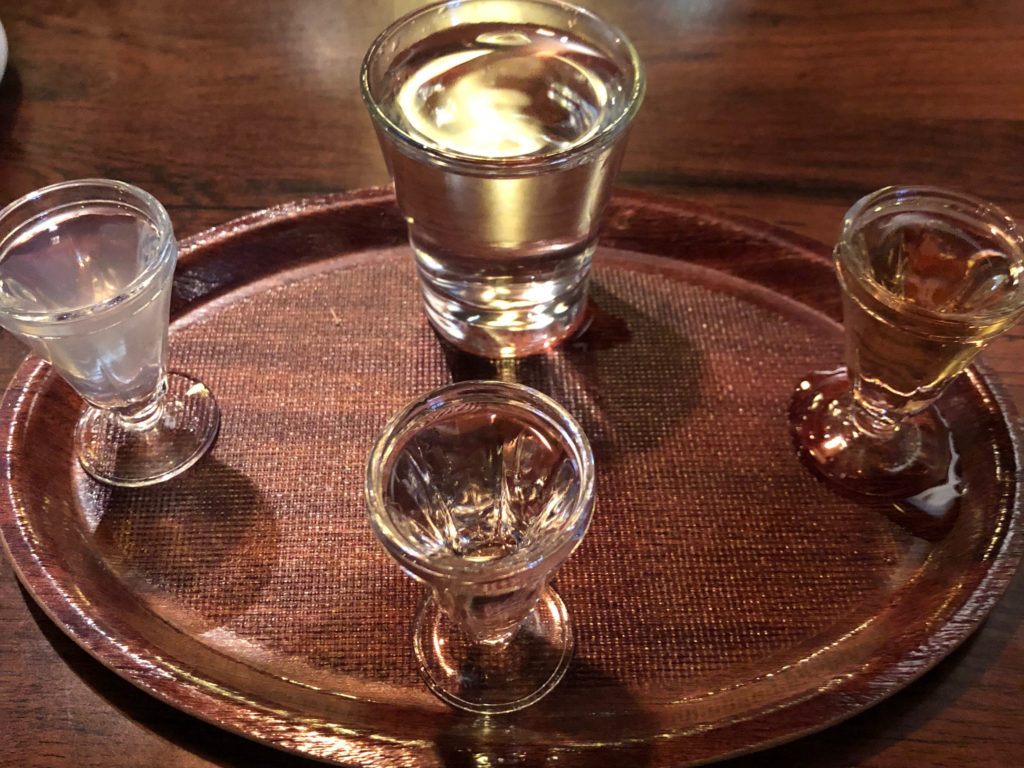
I arrived at the Two-Headed Phoenix, a café where visitors can taste Dutch liquor. I ordered a sampler with several different spirits to try. Many are flavored with herbs, fruit, and even chocolate! Nearby, I also stopped for lunch at the De Kraai pancake shop, where I ate another delicious Dutch pancake. In the Netherlands, pancakes are flat and are savored with meat, cheese, and
Cheese Farm
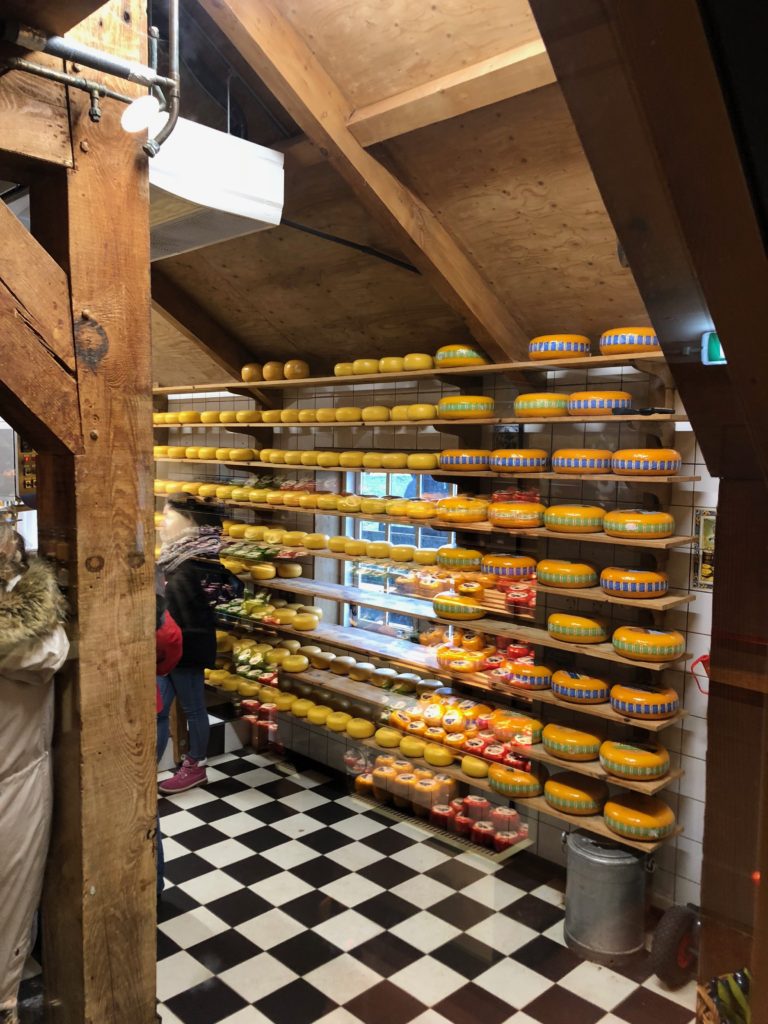
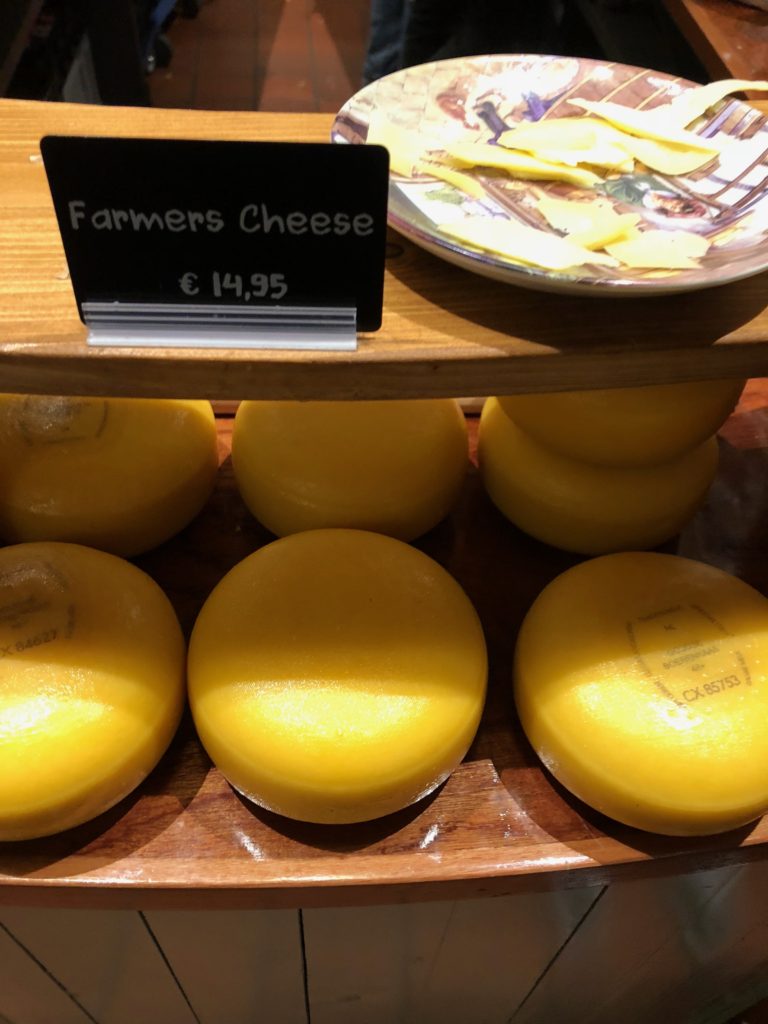
The Dutch are also famous for cheese, and Zaanse Schans is no exception. I dipped inside the local cheese farm, where several varieties were on sale. Although I did not join the group and watch the cheese-making demonstration, I still got to sample some of the finished product and look at all the colorful cheese wheels on display!
Chocolate Shop
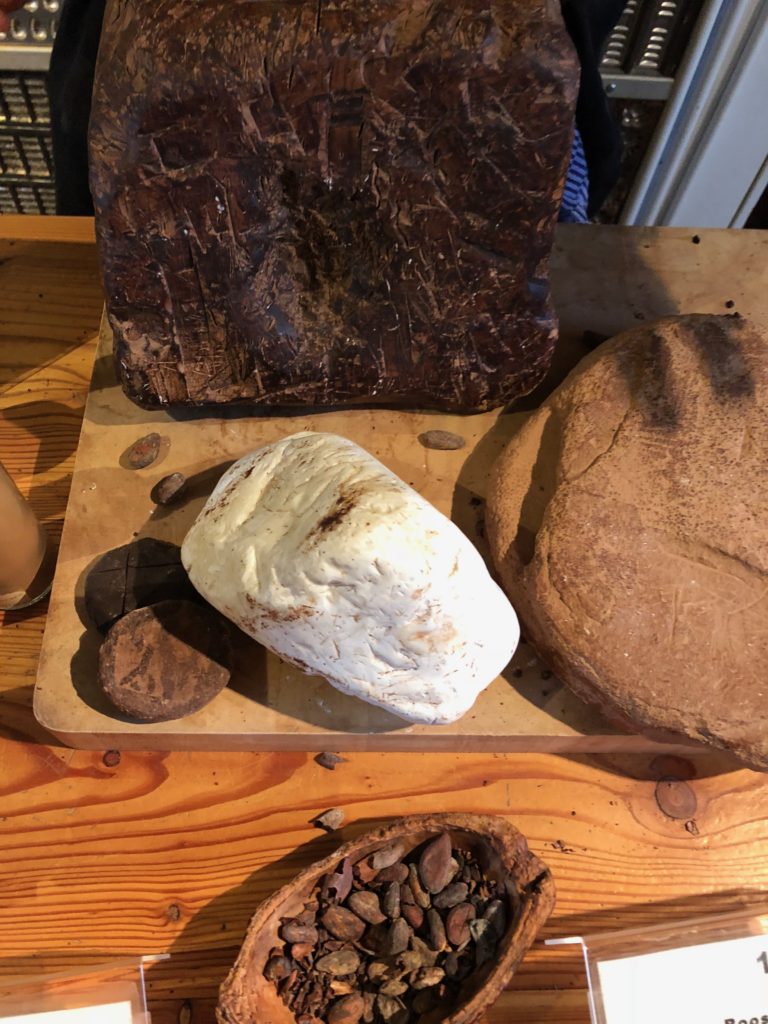
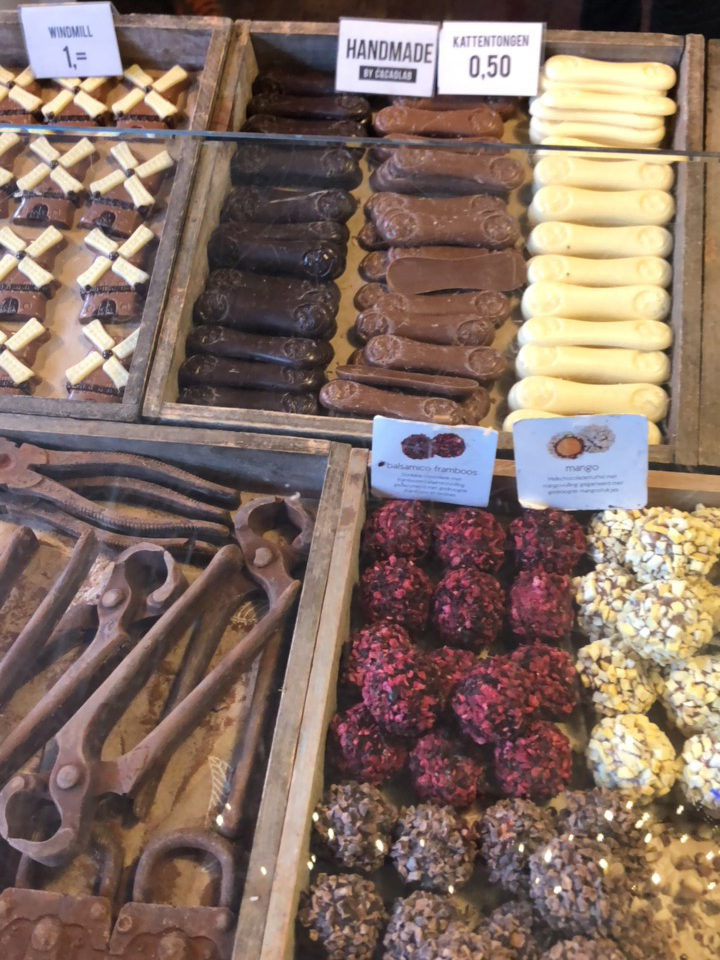
On a sweeter note, the Netherlands is well known for its chocolates: some of the best in the world. At the chocolate shop, I got to check out cacao in its raw form and also taste some freshly made Dutch chocolate. This shop sold them in all different shapes and sizes!
Windmills
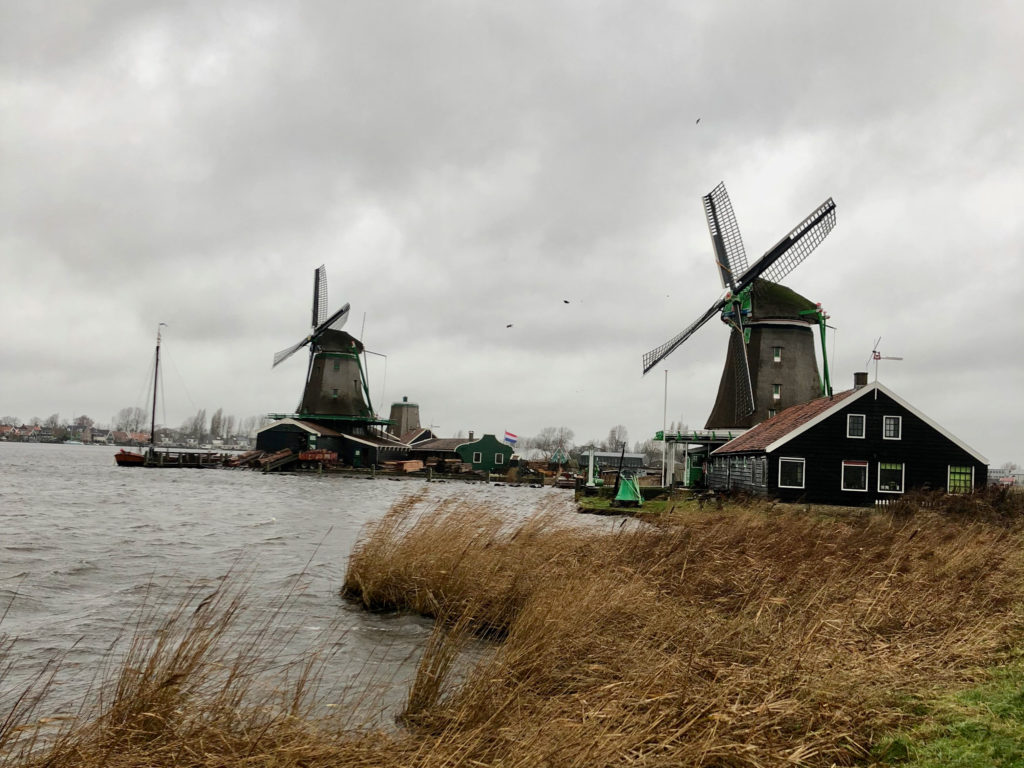
The main reason I came to Zaanse Schans, however, was to explore the beautiful windmills! Beyond the main village, the windmills are spread out along the Zaan River.
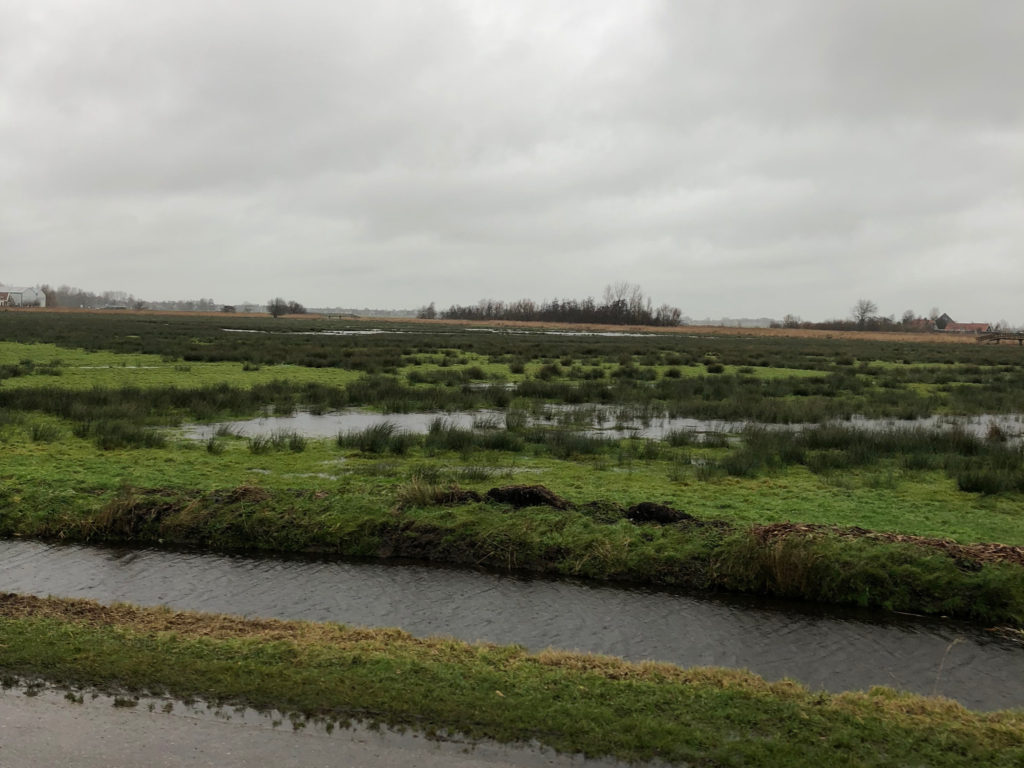
The surrounding land is soggy, evidence that this land was reclaimed from the sea. I had to walk uphill from the farm to reach the riverbank!
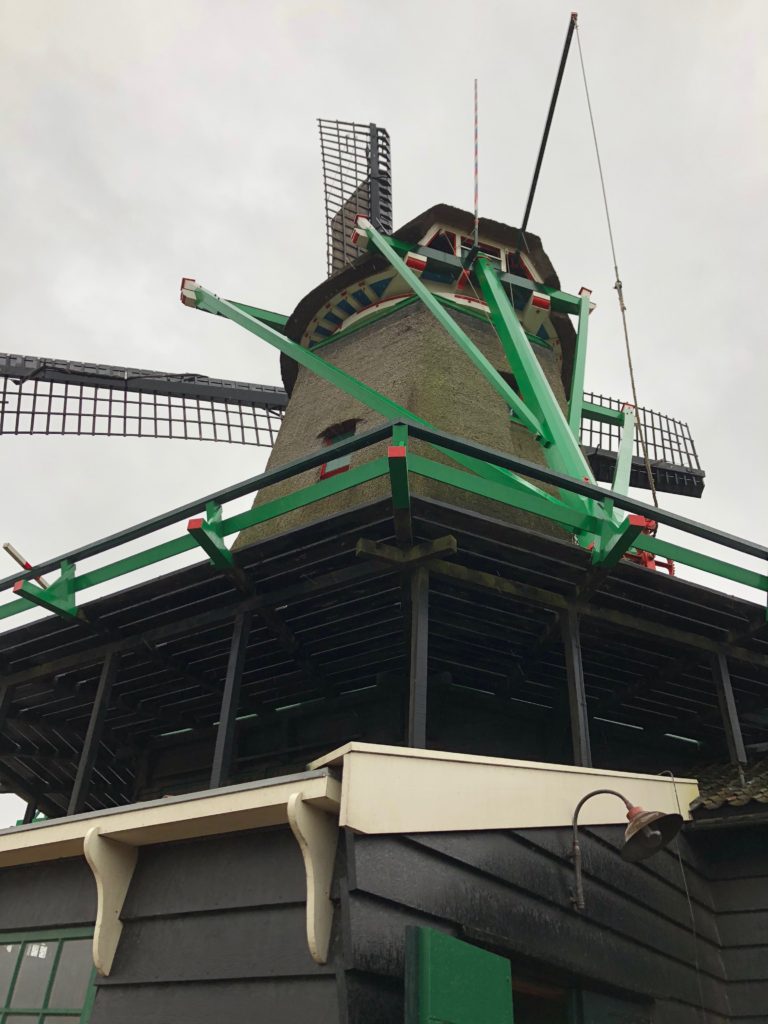
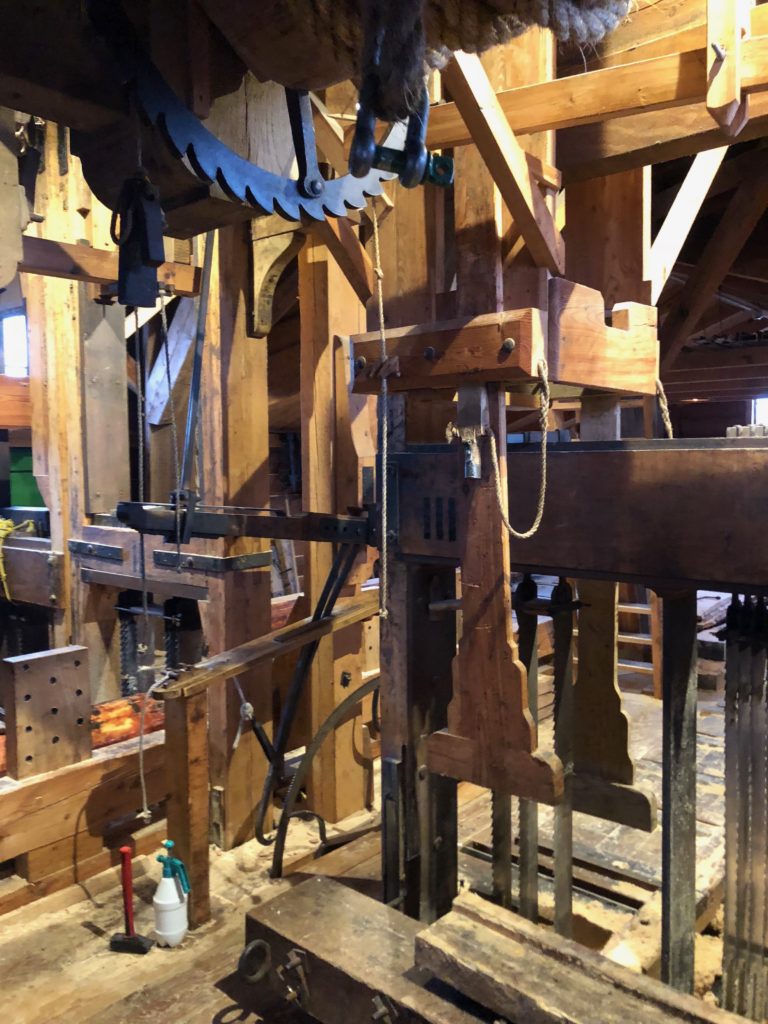
I entered Het Jonge Schaap, “The Young Sheep,” a windmill that functions today as a sawmill. The windmill keeper gave us a demonstration of the machine in action. The large wooden blades harness wind-power that operates the saw blades inside. These blades ultimately slice large pieces of wood into smaller pieces that are easier to manufacture into goods.
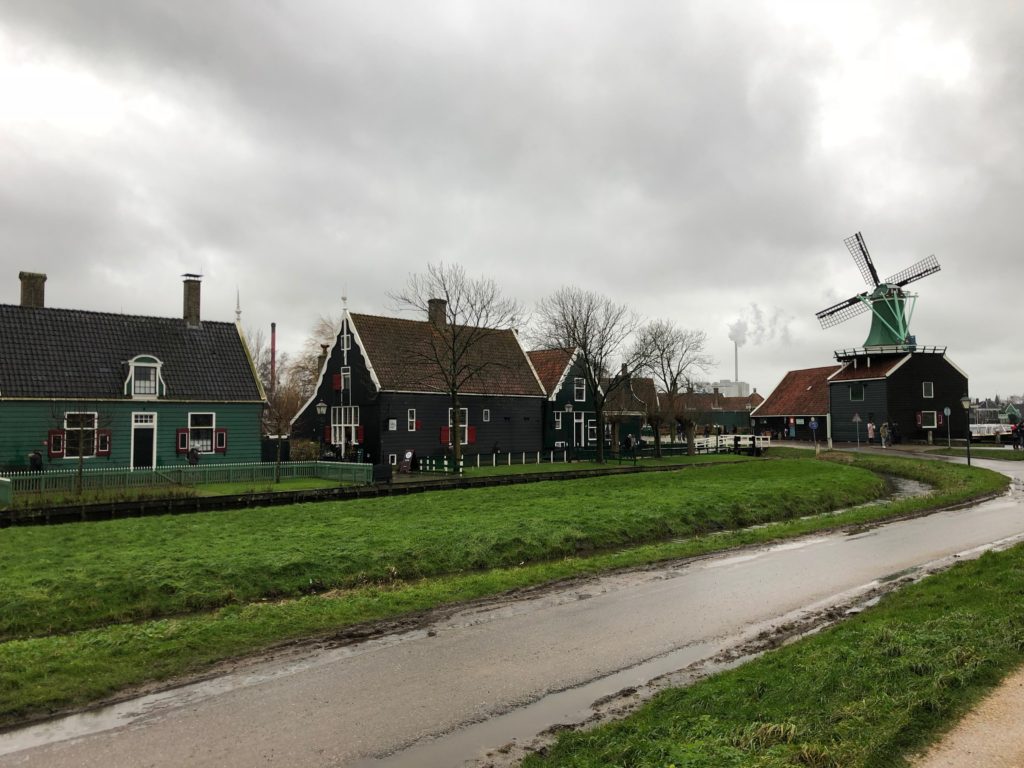
I headed back into the village to walk around a bit more before going back into Amsterdam. My visit to Zaanse Schans could not have been better! I got to experience everything Dutch, from windmills, clogs, cheese, chocolate, and pancakes. The village is also charming, with traditional Dutch architecture on a smaller scale.
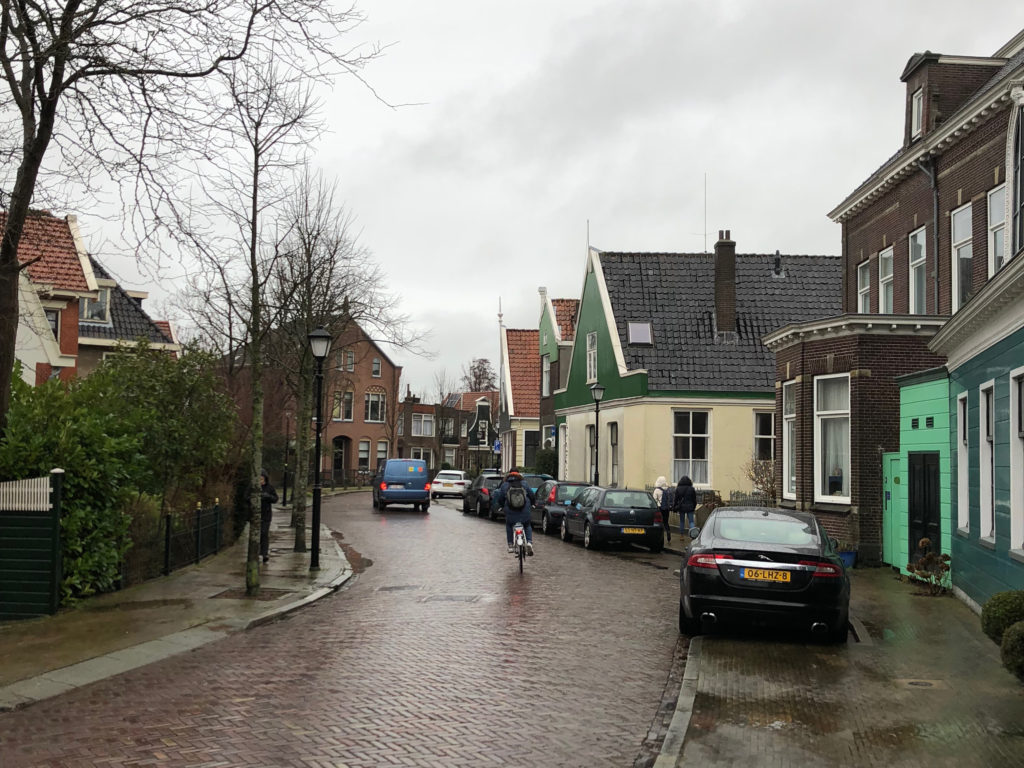
Back across the water, I took a walk through the suburban Netherlands before getting back on the train. Zaandijk is a typical small Dutch town, with quiet streets and small houses. All along the way, I could hear the constant launching of firecrackers, as New Year’s Eve festivities were already beginning!
New Year’s Eve
I headed back to Amsterdam Centraal to get ready to ring in 2018! In the Netherlands, fireworks are typically illegal but can be purchased a few days prior to December 31st. They can legally be launched between 6 p.m. and 2 a.m. on New Year’s Eve.
Unlike in other cities, Amsterdam does not have a controlled fireworks show. Although the city puts on an official show by the water, the majority of fireworks are launched by locals all over the city. Unfortunately, this practice leads to several injuries each year due to the
Since I was not ready to experience this culture shock, I grabbed a bottle of champagne, ate some oliebollen, a Dutch doughnut-like treat commonly had around New Years, and head to Oosterdok.
As the clock came closer and closer to midnight, a large adrenaline rush hit. People were already launching fireworks, but I was waiting in anticipation for the city to light up in color. The countdown began: “Ten, nine, eight, seven, six, five, four, three, two, one…”
“HAPPY NEW YEAR!!!!!” And just like that, fireworks lit up all over the city. It was certainly an amazing sight to see an already beautiful city lit up by colorful lights. It was also quite scary, as people were launching them left and right, often right in front of me. With all the boom boom boom around me, the scene was comparable to that of a warzone. I carefully tread back to the hostel, as I had an early flight to catch the next morning. The noise continued well into the night and I did not get much sleep.
As 5 a.m. on New Years Day rolled around, it was time to wake up and head to the airport. This was the end of an amazing and life

1imagery
online paper writing service https://term-paper-help.org/
custom written paper https://sociologypapershelp.com/
buy paper online https://uktermpaperwriters.com/
https://paperwritinghq.com/
buy a college paper https://writepapersformoney.com/
custom paper writing https://write-my-paper-for-me.org/
i need someone to write my paper https://doyourpapersonline.com/
pay someone to write paper https://top100custompapernapkins.com/
customized paper https://researchpaperswriting.org/
find someone to write my college paper https://cheapcustompaper.org/
pay to write a paper https://writingpaperservice.net/
customized paper https://buyessaypaperz.com/
do my papers https://mypaperwritinghelp.com/
dltk custom writing paper https://writemypaperquick.com/
paper writing services reviews https://essaybuypaper.com/
buy thesis paper https://papercranewritingservices.com/
pay for a paper https://premiumpapershelp.com/
where to buy resume paper https://ypaywallpapers.com/
custom papers for college https://studentpaperhelp.com/
2beverly
coursework plagiarism checker https://brainycoursework.com/
courseworks help https://courseworkninja.com/
data analysis coursework https://writingacoursework.com/
coursework on a resume https://mycourseworkhelp.net/
coursework samples https://courseworkdownloads.com/
coursework writing https://courseworkinfotest.com/
creative writing coursework ideas https://coursework-expert.com/
coursework sample https://teachingcoursework.com/
degree coursework https://buycoursework.org/
online coursework https://courseworkdomau.com/
meet= dating dating https://freewebdating.net/
online dting https://jewish-dating-online.net/
meet singles for free https://free-dating-sites-free-personals.com/
dating https://onlinedatingsurvey.com/
local free dating sites https://onlinedatingsuccessguide.com/
international dating sites https://onlinedatinghunks.com/
japanese singles dating sites https://datingwebsiteshopper.com/
local dating sites absolutely free https://allaboutdatingsites.com/
free adult personals https://freewebdating.net/